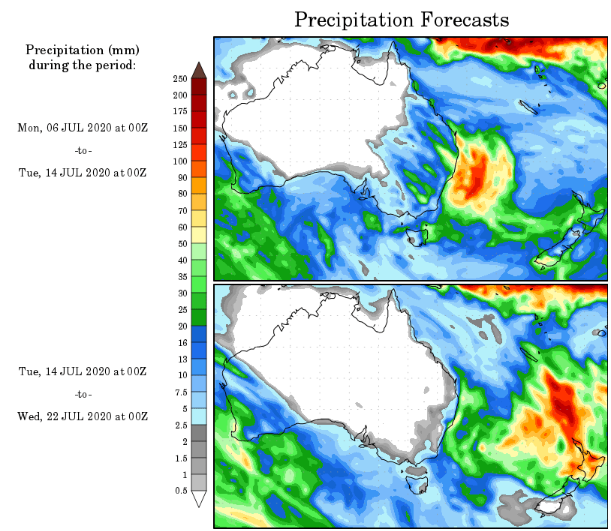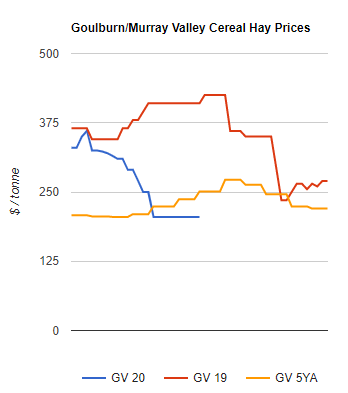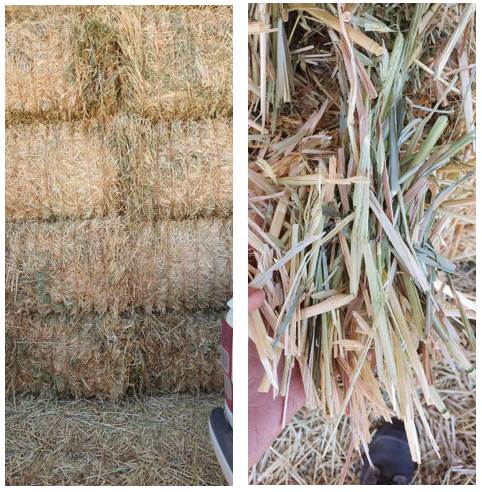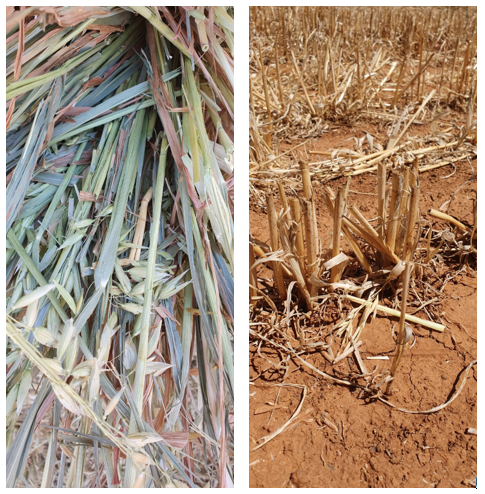Seasonal Update
The Goulburn/Murray recorded showers over the past seven days, with cold mornings but clear sunny days. Feed continues to grow, however, growth is much slower now with the onset of colder weather. The application of Urea programs continues to try to capture any rainfall to wash it in.
The drier last few months have worked well for livestock operators in southern Victoria. The drier conditions have led to lower soil moisture and firm paddocks capable of supporting cow grazing more than normal. These drier paddocks were capable of being grazed early in May and top-dressing of paddocks with urea and gibberellic acid has boosted the winter feed wedge.


Trading and Marketing

Victoria
The Goulburn/Murray enquiry and demand are low with adequate feed on hand in either paddocks or in sheds. Some hay is still moving out of the region to Cooma, NSW where it remains dry, with the recent COVID-19 developments this could become difficult going forward.
Pastures are ticking along well and long-term dairy farmers describe the season and feed availability as one of the best in the past 25 years. It is for these reasons that it is tough to sell hay, and truckloads of Mallee and Wimmera hay are a rare sight in southwest Victoria this winter.
All prices in Victoria remain steady this week.
| Change | per t | ||
| Cereal hay | +/- $0 | $190-220 | Steady |
| Lucerne hay | +/- $0 | $450-500 | Steady |
| Straw | +/- $0 | $70-100 | Steady |
| Pasture hay | +/- $0 | $250-330 | Steady |
Western Australia
It was been wet on the south coast of WA but still patchy conditions in other areas. The southern area continues to far better than the top of the Wheat Belt.
The storms that occurred around Northampton/Geraldton did cause a lot of damage to crops that had been planted and there has had to be some reseeding done in these regions.
Some export hay growers have increased plantings for new season hay. Given the right conditions and that it meets export requirements there is a hope that this extra hay will be wanted for export.
Many are trying to get by on what feed they have as domestic prices are felt to be just too expensive. There is very little hay or straw left that is not spoken for in Western Australia. Straw, lucerne, and pasture are difficult to source. Growers have had to turn new inquiries down as they do not have the supply.
No major price changes have been noted this week.
| Change | per t | ||
| Cereal hay | +/- $0 | $330-370 | Steady |
| Lucerne hay | +/- $0 | $450-490 | Steady |
| Straw | +/- $0 | $120-140 | Steady |
| Pasture hay | +/- $0 | $200-220 | Steady |
South Australia
Southeast South Australia have had a heavy storm pass through in the last couple of days.
It’s not too wet and crops are up and looking healthy. Growers are spreading urea at the moment and trying to spray when weather conditions permit.
Demand remains flat in southeast South Australia. There are still reports of nervous selling, potentially feeling that any old and damaged stocks need to be moved before a flood of new season hay comes onto the market in the spring. Demand will improve as it does for most areas when feed is required to carry stock during the cold months but that has not occurred yet to any great degree.
Prices have held this week.
| Change | per t | ||
| Cereal hay | +/- $0 | $250-300 | Steady |
| Lucerne hay | +/- $0 | $350-400 | Steady |
| Straw | +/- $0 | $100-120 | Steady |
| Pasture hay | +/- $0 | $180-200 | Steady |
Pictures of 19/20 Season Crops
Hay: Oaten Hay PW (Premium Rain Damage)
Specifications: Feels crunchy, minimal amount of weather damage spots & stains, fresh aroma, <1% Rye Grass, JC-1 colour (85% Green) and JC-1 Super stem size (<6mm).
Location: WYCHITELLA, VIC, 3525


Sources: Bureau of Meteorology, Dairy Australia, WX Maps, Lachstock Research, Weekly Times, Grain Central, Mecardo Expert Market Analysis, Feed Central and Wingara AG.
By Katie Lindkvist, Wingara AG.
